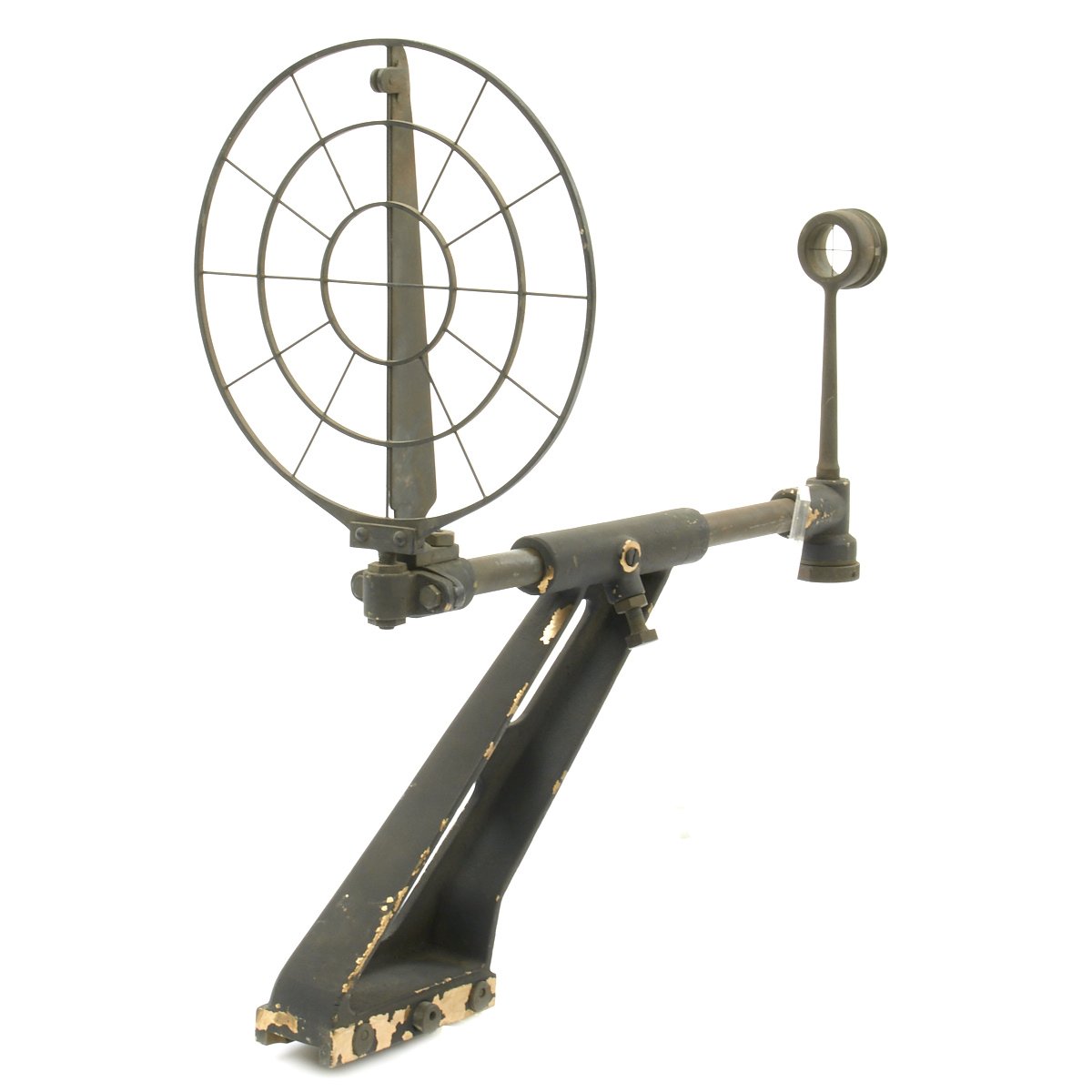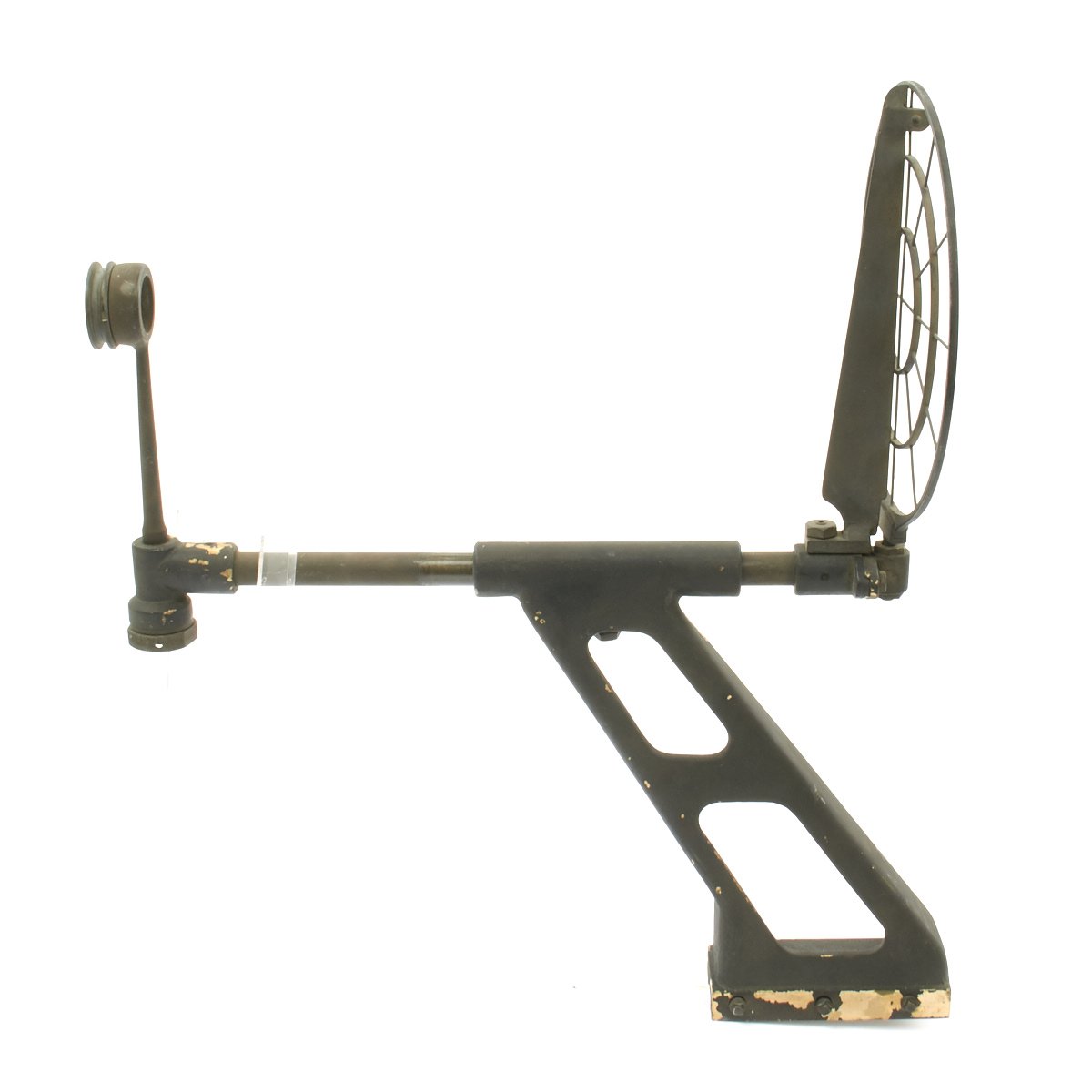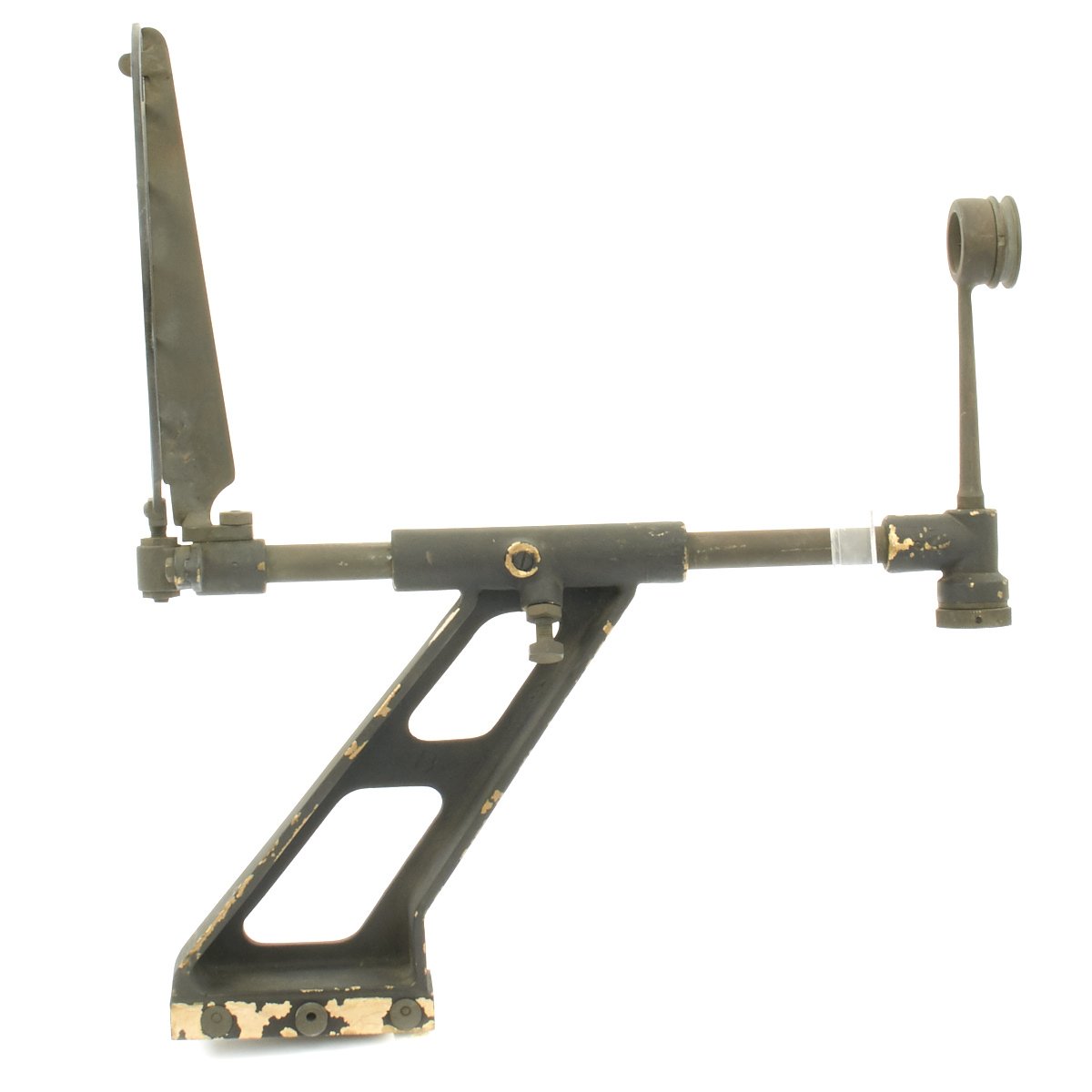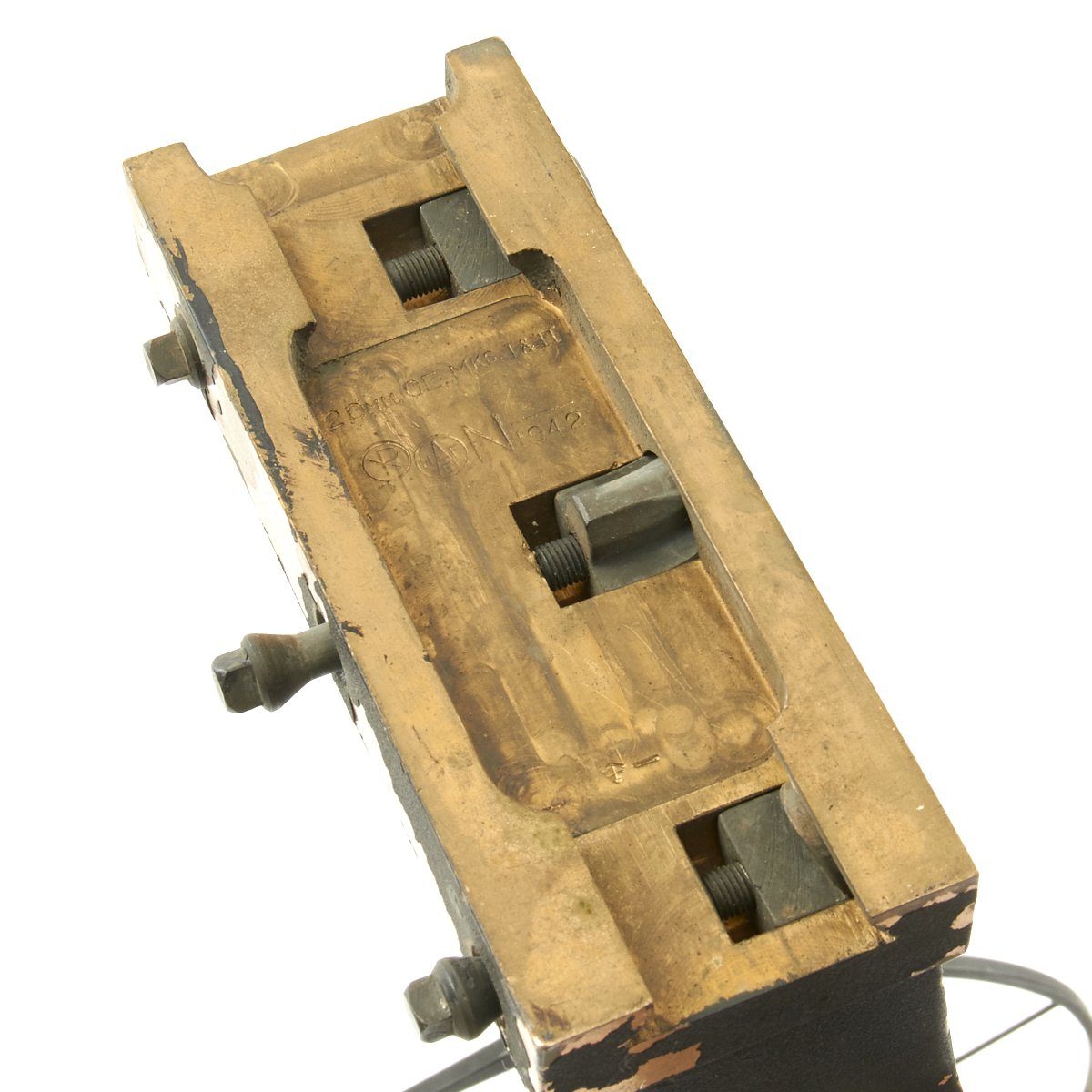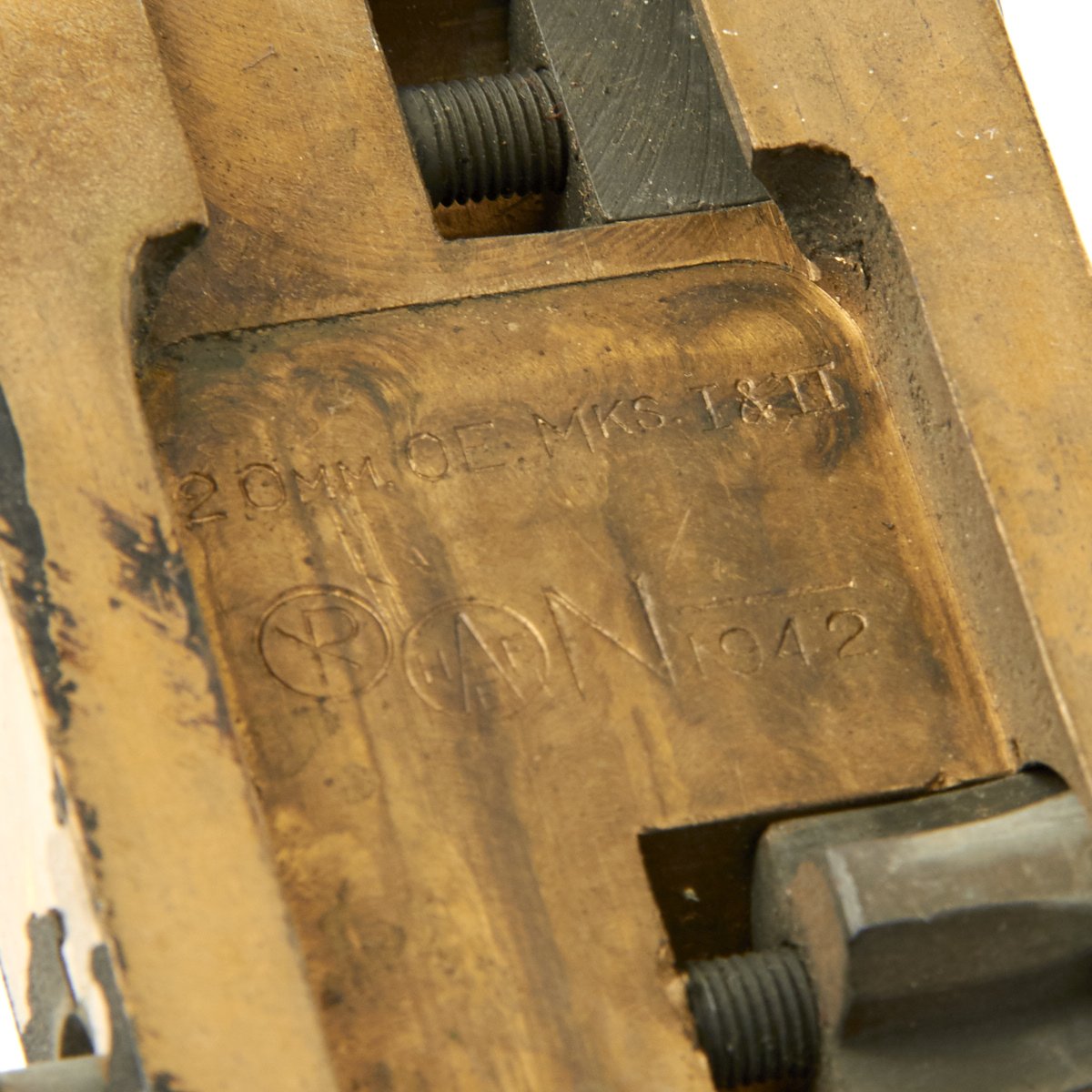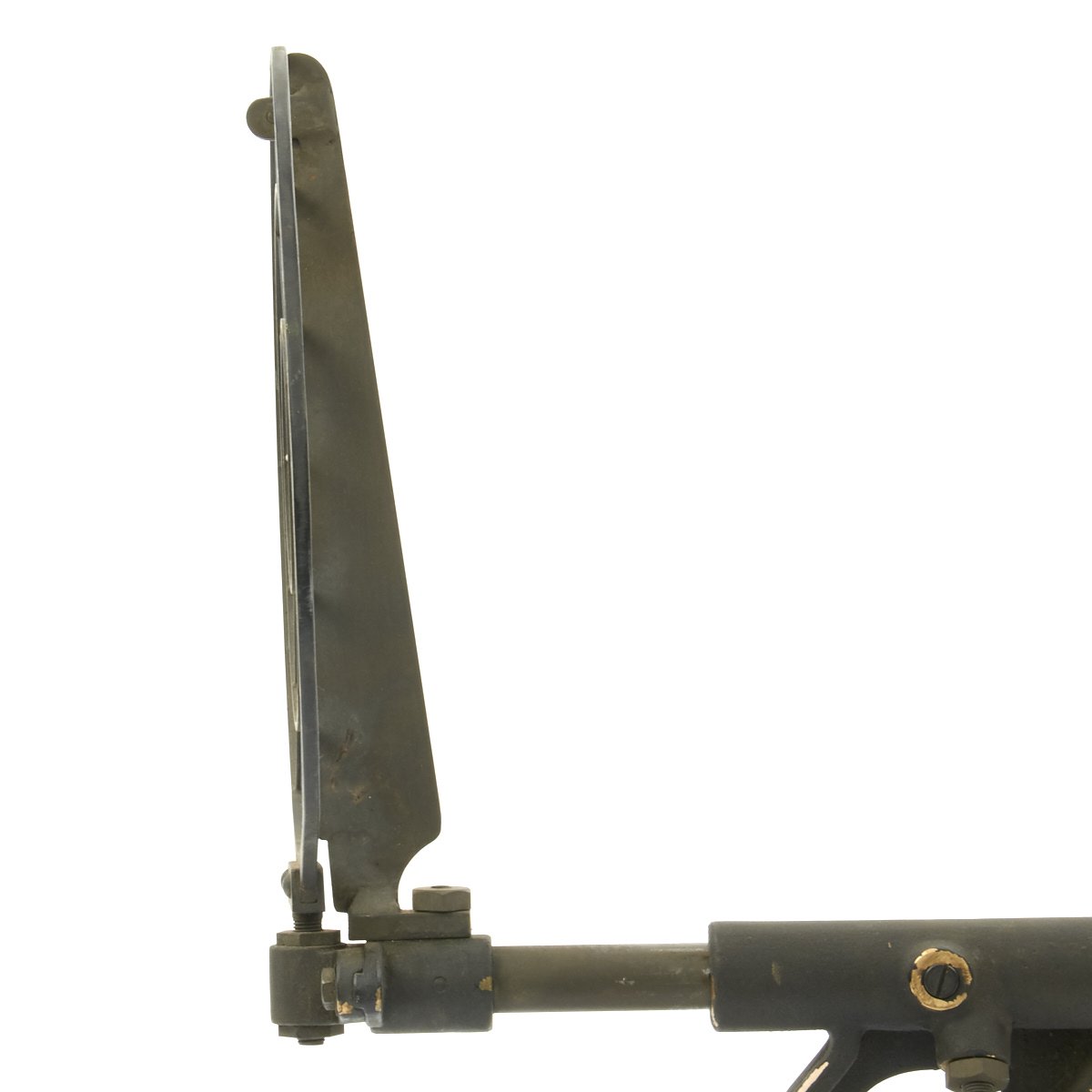Original British WWII Royal Navy 20mm Oerlikon Anti-Aircraft Gun Sight Dated 1942 Original Items
$ 795,00 $ 238,50
Original Item: Only One Available. This is an excellent condition British WWII Royal Navy Oerlikon 20 mm/70 (0.79″) Mark I and Mark II cannon sight. The Oerlikon 20mm anti-aircraft cannon was widely used by naval and air forces during World War II, by countries on both sides. Sight appears to be unissued and is in excellent condition.
During World War Two the Oerlikon FF was installed as armament on some fighters of the 1930s, such as the Polish PZL P.24G. Locally produced derivatives of the Oerlikon cannon were used much more extensively, on aircraft, on ships and on land. In the air, the Ikaria MG FF was used as armament on a number of German aircraft, of which the most famous is the Messerschmitt Bf 109. The Japanese Navy similarly used their copy of the FF, designated the Type 99 Mark One cannon on a number of types including the Mitsubishi A6M Zero. Later in the war, they also equipped fighters including the Zero with the Type 99 Mark Two, a version of the more powerful and faster-firing Oerlikon FFL.
The French firm of Hispano-Suiza was a manufacturer of aircraft engines, and it marketed the moteur-canon combination of its 12X and 12Y engines with a H.S.7 or H.S.9 cannon installed between the cylinder banks. The gun fired through the hollow propeller hub, this being elevated above the crankcase by the design of the gearing. Such armament was installed on the Morane-Saulnier M.S.406 and some other types. Similar German installations of the MG FF were not successful.
The Oerlikon became best known in its naval applications. Initially the Oerlikon was not looked upon favorably by the Royal Navy as a short-range anti-aircraft gun. All through 1937-1938 Lord Louis Mountbatten, then a Captain in the Royal Navy, waged a lone campaign within the Royal Navy to set up an unprejudiced trial for the Oerlikon 20 mm gun, but it was all in vain. It was not until the Commander-in-Chief of the Home Fleet, Admiral Sir Roger Backhouse, was appointed First Sea Lord that Mountbatten’s efforts bore fruit. During the first half of 1939 a contract for 1,500 guns was placed in Switzerland. However, due to delays and then later the Fall of France in June 1940, only 109 guns reached the United Kingdom. All Oerlikon guns imported from Switzerland in 1940 were mounted on various gun carriages to serve as light AA-guns on land.
Just a few weeks before the Fall of France, the Oerlikon factory approved manufacture of their gun in the United Kingdom, under licence. The Royal Navy managed to smuggle out the necessary drawings and documents from Zürich. The production of the first British-made Oerlikon guns started in Ruislip, London, at the end of 1940. The first guns were delivered to the Royal Navy in March or April, 1941. The RAF Regiment made extensive use of Oerlikon guns in the anti-aircraft role. These were the principal armament for its Light Anti-Aircraft squadrons in North Africa, the Middle East, Italy, and North Western Europe, until the introduction of the Bofors 40/L60 40mm gun from 1943, although many squadrons retained a mix of guns until the end of World War 2. Squadrons in the Far East were equipped exclusively with Oerlikons.
The Oerlikon gun was installed aboard United States Navy ships from 1942, replacing the M2 Browning machine gun, which lacked range and firepower, and largely superseding the 1.1″/75 caliber gun, which was heavier and had less mechanical reliability. It became famous in the naval anti-aircraft role, providing an effective defense at short ranges (in practice up to 1.5 km) at which heavier guns had difficulty tracking a target. The gun was eventually abandoned as a major anti-air weapon due to its lack of stopping power against heavy aircraft and against Japanese kamikaze attacks during the Pacific War. It was largely superseded by the Bofors 40 mm gun and the 3″/50 Mark 22 gun. It did, however, provide a useful increase in firepower over the .50 cal machine gun when adapted and fitted to some aircraft. However, it had some problems with jamming in the ammunition feed.
The Royal Canadian Navy popularized the use of the Oerlikon gun as an anti-ship and anti-submarine gun – while it was not effective against the armour of most larger ships, it was used extensively and effectively against U-Boats, and on the decks of larger ships. A handful of corvettes were fitted with the weapon toward the end of the war, but it appeared more commonly on frigates and destroyers at the time.
The Oerlikon was also used as the basis for the Polsten gun, designed by Polish engineers in exile in the United Kingdom. The gun went into service in 1944 and was used well into the 1950s, among other uses, on Cromwell tanks[citation needed] and early model Centurion tanks.
Romania purchased 45 pieces from Germany during the first half of World War II.
Fast Shipping with Professional Packaging
Thanks to our longstanding association with UPS FedEx DHL, and other major international carriers, we are able to provide a range of shipping options. Our warehouse staff is expertly trained and will wrap your products according to our exact and precise specifications. Prior to shipping, your goods will be thoroughly examined and securely secured. We ship to thousands clients each day across multiple countries. This shows how we're dedicated to be the largest retailer on the internet. Warehouses and distribution centres can be located throughout Europe as well as the USA.
Note: Orders with more than one item will be assigned a processing date depending on the item.
Before shipping before shipping, we'll conduct a thorough inspection of the items you have ordered. Today, the majority of orders will be delivered within 48 hours. The delivery time will be between 3-7 days.
Returns
The stock is dynamic and we cannot completely manage it because multiple stakeholders are involved, including our factory and warehouse. So the actual stock may alter at any time. It's possible that you may not receive your order once the order has been made.
Our policy is valid for a period of 30 days. If you don't receive the product within 30 days, we are not able to issue a refund or an exchange.
You can only return an item if it is unused and in the same state as the day you received it. You must have the item in its original packaging.
Related products
Uncategorized
Uncategorized
Australian WWII Owen MK1 Machine Carbine SMG Custom Fabricated Replica with Sling Original Items
Uncategorized
Uncategorized
Uncategorized
Uncategorized
Uncategorized
Uncategorized
Uncategorized
Uncategorized
Armoured Fighting Vehicles of the World: AFVs of World War One (Hardcover Book) New Made Items
Uncategorized
Uncategorized
Uncategorized
Uncategorized
Uncategorized
Uncategorized
Uncategorized
